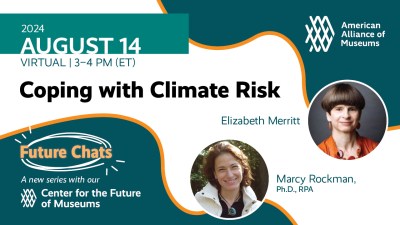
Ever since the closures in response to the COVID-19 pandemic, museums have been working to engage the public through remote alternatives. Two hashtags have emerged on social media platforms: #MuseumFromHome and #MuseumMomentOfZen—which speak to the need for education, stimulation, and inspiration during our challenging and confusing times. For its strategy, the Rubin Museum of Art in New York City has been publishing a ten-minute video for every day it would normally be open, featuring a close look at an object in the collection and insights from the Himalayan traditions the museum focuses on.
We asked the Rubin Museum of Art’s Chief Experience Officer, Jamie Lawyer, to explain this strategy and the considerations that went into it. Keep your eye on the Alliance Blog for more on museums’ responses to COVID-19, and contact us if you have something to share with the field.
More #MuseumFromHome strategies:
- The Akron Art Museum’s collaborative crosswords
- Albright-Knox’s artwork showdowns
- The Carnegie Museum of Natural History’s funny TikToks
Support Free COVID-19 Resources for the Field
The current crisis is taking a distressing financial toll on cultural organizations, and AAM is no different. The Alliance Blog is supported by membership dues and donations. In these challenging times, we ask that if you can, consider making a donation or becoming a member of AAM. Thank you for your much-needed support!
So, first, can you give us the abstract on what the Rubin Daily Offering is? What is the format, and how did you come up with it?
The Rubin Daily Offering is a video series hosted on our Instagram IGTV channel that provides art, ideas, and practices inspired by our collection to help us find balance in our world. Thursday through Monday (the days our Museum would normally be open to the public), we release a new 10-minute video featuring a Rubin Museum staff member, who introduces an artwork, and an invited guest, who shares insights or tools. Every week we explore a different theme with another staff and guest pairing.
The format was the result of cross-departmental collaboration, taking into consideration our resources, capacity, and expert knowledge. We brought in meditation teachers who we normally work with at the Museum, as well as speakers from programs that had to be cancelled because of COVID-19.
Your museum has a unique advantage in that its mission feels particularly suited to what the public needs right now. How do you think the ideas and practices the series explores could help people cope with our circumstances?
The art and living traditions from the Himalayas and beyond that anchor the Museum’s collection demonstrate that shifting or relinquishing a perspective can allow for new possibilities and ways of seeing the world. Our visitors consistently come to us during moments of uncertainty in their lives or the world for connection, relief, reflection, and more. It made sense to us to continue to provide that moment of pause and opportunity for reflection, and engage audiences in a dialogue that hopefully helps them navigate what is happening within them and in the world around them.
Why was IGTV a good platform for this series? What kinds of uses would you suggest other museums look into it for?
We knew that during our temporary closure we needed to create as little a barrier as possible for our audiences to connect with us. We thought about our various platforms for communicating and the benefits and drawbacks of each one.
With Instagram, so many people are already engaged; the IGTV feature doesn’t have ads; it supports various video lengths; and even those who don’t have an Instagram account can still watch videos on IGTV. It felt like the natural platform for us to focus on. This was new territory for us, but we are thrilled to see it working so well. We also upload all episodes to our website and our YouTube channel, so we can reach people in other ways.
The Rubin had been making digital content long before the closures came on, including an ongoing weekly meditation podcast. How has the response to the Daily Offering been different from those, if it all? Have you seen higher engagement?
Yes, we have been focusing on digital content since long before our temporary closure. But in general we have seen an expanded level of reach and engagement with the Daily Offering videos compared to our other digital initiatives. The response has been overwhelmingly positive, and audiences have been generous with their feedback. What feels different now is that we can feel the vulnerability in the comments they leave online. There are so many messages of gratitude and a strong appreciation for both our staff hosts and featured guests.
Right now, a lot of museums seem caught between wanting to be of service to the struggling public but also facing their own incapacitating issues with financial and operational uncertainty. How do you think they can square the two?
Many of us have an immense desire to do more, or maybe feel like we aren’t doing enough. But what we need now is to be real about what matters most to our organizations and be kind to ourselves about our limitations. Now more than ever, we need to lead with compassion and kindness. We need to pause and make sure that we are extending this not only to our visitors but also to ourselves and our teams. Just because the future is unknown doesn’t mean we can’t lead with clarity and compassion in our present moment.
Skip over related stories to continue reading article








Comments